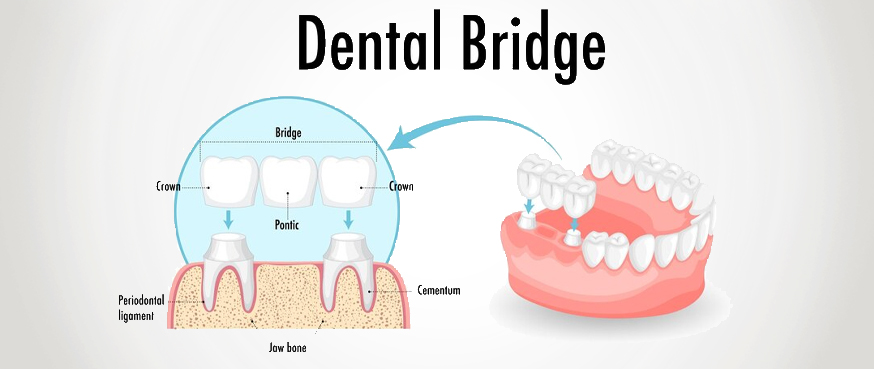
What is a
crown and bridge?
A crown is a cap that protects the existing tooth from
structural damage.
A bridge is a three or more joined crowns which serves as a
means of replacing missing teeth by taking support from the adjacent teeth on
either side. Teeth adjacent to the missing one is called an abutment.
Benefits:
- Protect a weakened tooth from decay or breakage.
- Replace your missing teeth.
- Improves your speech and chewing capacity
- Corrects your irregularly shaped teeth
- Improves self-esteem by giving you a confident celebrity smile.
When do I need crowns and bridges?·
- Large fillings
- Fractured / broken teeth
- Cosmetic problem
- Missing teeth
First visit:
Prepare your
teeth:
To prepare your tooth for a crown, your dentist will need to
remove some of your natural enamel. This makes space for your new crown and
ensures that it will stay in place once bonded.
Impression:
Impressions taken with a putty-like material or digital
impressions taken with a 3D scanner. Your dentist will send these impressions
to a dental lab. There, a technician will use them to create your custom dental
crown.
Second visit
During the second office visit, your dentist will check the shape, colour and fit of your new crown. Once it is confirmed as an accurate fit they will bond the new crown to your tooth using a strong dental cement.
TYPES OF
DENTAL CROWNS
Metal ceramic: metal fused with ceramic is a common
choice of crown over the years. However, its strength is user dependent unlike
zirconia crowns.
Zirconia & Emax: Zirconia and Emax crowns offer
several benefits over traditional crowns, including accuracy, strength,
durability, and aesthetics. less prone to chipping or breaking than traditional
ceramic crowns. They have a natural-looking appearance, making them a popular
choice for patients who want a crown that looks and feels like a natural tooth.
Gold crowns are a type of dental crown that has been
used for many years due to their strength, durability, and resistance to wear
and corrosion. They are made from a special type of alloy that contains gold,
as well as other metals such as copper, silver, or platinum. Gold crowns are
often used for back teeth where the crown will not be visible.
Inlays and onlays are types of dental restorations
that are used to repair teeth that have been damaged by decay or injury. Inlays
are used to repair damage to the chewing surface of the tooth, while onlays are
used to repair damage to the chewing surface and one or more cusps. Inlays and
onlays are made from either porcelain or composite resin materials and are
custom-made to fit the specific shape and size of the damaged tooth.
Frequently asked questions
An FAQ (Frequently Asked Questions) page is a key part of a knowledge base because it addresses the most common questions customers have and is useful to customers at all stages of the customer journey.

